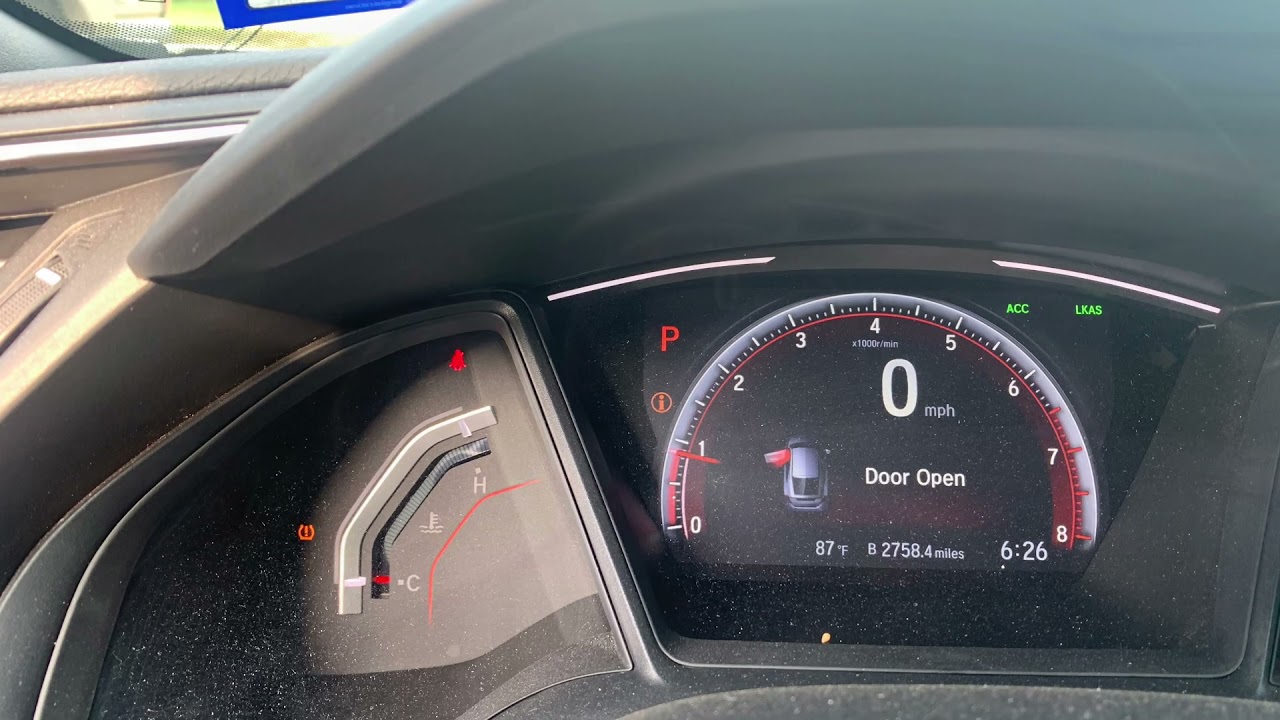To reset tire pressure on a Honda Civic 2020, access the Vehicle Settings menu on the infotainment system, select TPMS Calibration, and follow the on-screen instructions. The Honda Civic 2020 offers various advanced features, including a Tire Pressure Monitoring System (TPMS) that alerts the driver when tire pressure drops below the recommended level.
However, there may be situations where the TPMS needs to be reset, such as when tires are replaced or rotated. We will guide you through the simple process of resetting the tire pressure on a Honda Civic 2020. By following a few straightforward steps, you can ensure accurate tire pressure readings and optimal performance of your vehicle.
Let’s dive in and get started with the resetting process.
Importance Of Proper Tire Pressure In Honda Civic 2020
The proper tire pressure is crucial for maintaining the safety and performance of your Honda Civic 2020. Driving with incorrect tire pressure can lead to various safety concerns. Under-inflated tires can cause poor handling, increased braking distances, and the risk of a blowout. On the other hand, over-inflated tires can decrease traction, resulting in reduced control and increased stopping distances. It’s important to regularly check and adjust the tire pressure to ensure optimal performance and safety.
Moreover, maintaining the proper tire pressure also has an impact on fuel efficiency and tire longevity. Under-inflated tires can increase rolling resistance, causing the engine to work harder and decreasing fuel efficiency. This can lead to more frequent refueling and increased fuel costs over time. Additionally, incorrect tire pressure can cause uneven tire wear, reducing the lifespan of your tires and requiring more frequent replacements.
Regularly checking and resetting the tire pressure on your Honda Civic 2020 is a simple yet crucial maintenance task that can help ensure your safety, improve fuel efficiency, and extend the lifespan of your tires.

Credit: www.jdpower.com
Step 1: Understanding Honda Civic 2020 Tire Pressure Monitoring System (tpms)
Understanding Honda Civic 2020 Tire Pressure Monitoring System (TPMS)
The Tire Pressure Monitoring System (TPMS) is a crucial component of the Honda Civic 2020. It constantly monitors the air pressure in the tires and alerts the driver if there is any deviation from the recommended tire pressure. This system plays a vital role in ensuring the safety and performance of the vehicle.
The TPMS in the Honda Civic 2020 uses sensors located in each tire to measure the air pressure. These sensors transmit the information to an onboard computer, which then alerts the driver through a warning light on the dashboard if the pressure in any tire drops below the recommended level. This allows the driver to take necessary action and avoid any potential accidents or tire damage.
Importance of using proper tire pressure according to TPMS
Using the correct tire pressure recommended by the TPMS is crucial for various reasons. Firstly, it ensures optimal fuel efficiency, as under-inflated or over-inflated tires can lead to increased fuel consumption. Secondly, proper tire pressure enhances the overall handling and stability of the vehicle, reducing the risk of accidents. Lastly, maintaining the correct tire pressure extends the lifespan of the tires and promotes even tire wear, thus saving costs on tire replacement in the long run.
Step 2: Checking Tire Pressure On Honda Civic 2020
Properly inflated tires are crucial for optimal performance and safety. To accurately check the tire pressure on your Honda Civic 2020, you will need the following preparation and tools:
- A tire pressure gauge
- The owner’s manual
Begin by referring to the owner’s manual to locate the specific tire pressure information for your Honda Civic 2020. This will ensure that you check the tires at the correct pressure level recommended by the manufacturer.
Once you have the necessary information, proceed with the following step-by-step guide to check the tire pressure accurately:
- Remove the valve caps from each tire.
- Attach the tire pressure gauge firmly onto the valve stem of a tire.
- Read the pressure displayed on the gauge.
- If the pressure is below the recommended level, add air until it reaches the desired pressure.
- Repeat the process for the remaining tires.
Regularly checking and maintaining the proper tire pressure on your Honda Civic 2020 will ensure a smooth and efficient driving experience, as well as extend the lifespan of your tires.
Step 3: Resetting Tire Pressure On Honda Civic 2020
In order to reset the tire pressure on your Honda Civic 2020, it is important to understand the reasons for doing so and the process involved. The tire pressure monitoring system (TPMS) in your vehicle is designed to alert you when the tire pressure is low, which can affect the performance and safety of your vehicle. Resetting the tire pressure is necessary after performing actions such as inflating or deflating the tires, rotating the tires, or replacing a tire.
To reset the tire pressure on your Honda Civic 2020, follow these detailed instructions:
- Turn on the ignition without starting the engine.
- Press and hold the TPMS button until the TPMS indicator blinks twice.
- Drive your vehicle for at least 20 minutes at a speed of 30 mph or more.
- Stop your vehicle and turn off the ignition.
- Start the engine again and check if the tire pressure indicator light is off.
By following these steps, you can successfully reset the tire pressure on your Honda Civic 2020 and ensure optimal performance and safety on the road.
Step 4: Verifying Correctly Reset Tire Pressure
After following the steps to reset the tire pressure on your Honda Civic 2020, it is important to ensure that the reset was successful. To do this, you will need to verify that all tires have the correct pressure. Start by checking the pressure of each tire using a tire pressure gauge. Compare the readings with the recommended PSI for your vehicle, which can be found in the owner’s manual or on the driver’s side door jamb.
If the pressure in any of the tires is lower or higher than the recommended range, you may need to adjust it accordingly. Add or release air as needed until each tire is at the proper pressure. Once you have confirmed that all tires have the correct pressure, you can be confident that the TPMS reset was successful.
To maintain proper tire pressure in the future, it is recommended to check the pressure regularly and adjust it as needed. Properly inflated tires not only promote better fuel efficiency but also contribute to a smoother and safer ride.
Conclusion
To ensure optimal performance and safety for your Honda Civic 2020, resetting tire pressure is vital. By following the simple steps outlined in this guide, you can easily reset the tire pressure on your vehicle. Regularly monitoring and maintaining the correct tire pressure not only prolongs tire lifespan but also enhances fuel efficiency and ensures a smooth and comfortable ride.
Take control of your Honda Civic’s tire pressure to experience a hassle-free driving experience.

